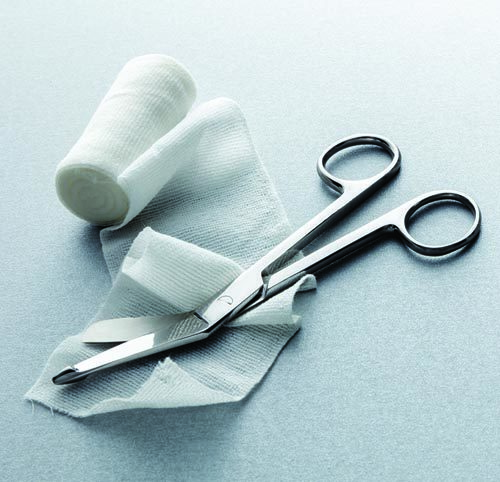Responding to a bleeding emergency
If someone has a serious cut and gets blood on the floor, how do we treat the cut? And how do we safely clean up the blood?

Responding is Meaghan Jordan, director of marketing, First Aid Only, Acme United Corp., Fairfield, CT.
A bleeding emergency can be serious. Severe bleeding can occur when a large blood vessel is torn or cut. Minor bleeding is from small cuts or scrapes.
Direct pressure is the first step to stop bleeding, whether it’s severe or minor. Call 911 when someone has lots of bleeding, bleeding that can’t be stopped, a head injury, a suspected spine injury or a tourniquet applied, as well as when signs of shock are present.
When treating any bleeding emergency, the following steps are helpful:
- Think about your safety. Is the area safe for you to help the person? If not, can the person move to safety? Don’t put yourself in harm’s way.
- Look for the source of the wound.
- Control the bleeding. How this is done will depend on what supplies are available. If you have a first aid kit or trauma kit, put on personal protective equipment (gown, glasses, gloves). Using gloved hands, place several gauze pads on the wound and apply direct pressure. However, if there’s no first aid kit, find a clean cloth to place on the wound and something to protect your hand (a thick cloth) as you apply direct pressure.
- If the wound is on an arm or leg, elevate the limb.
- If bleeding doesn’t stop, apply more pressure. Add gauze or cloth to the dressing if blood soaks through.
- If a trauma kit is available and bleeding isn’t responding to direct pressure:
- For a torso, neck or groin wound, if a blood coagulate is available, use it on the wound.
- For an arm or leg, a tourniquet may be used. Place the tourniquet 2 inches above the injury and follow tourniquet instructions. Tighten the tourniquet until bleeding stops. Using a marker, write the time the tourniquet was applied on the person’s forehead. Once bleeding has stopped, leave the tourniquet in place. The decision to remove it must be made by someone with advanced medical training.
- Don’t remove any of the dressing. If bleeding stops, the dressing can be held in place with a bandage.
Once the bleeding emergency is under control and care has been transferred to a trained medical professional, the surroundings where the bleeding event occurred will need to be properly cleaned and disinfected.
- Block off the blood-contaminated area(s).
- Wear appropriate PPE (gloves, gown, safety glasses, shoe covers).
- Use disposable towels, rags or a powder absorbent to soak up wet blood or other potentially infectious materials.
- Use an appropriate solution to disinfect the area that had blood. There are solutions that are commercially available, or use a 10 percent bleach solution – one-fourth cup of bleach to 1 gallon of water (freshly made).
- Do not pick up any sharp objects (glass, needles) with your hands. Instead, use tools such as tongs, brooms or dust pans. Put any sharp objects contaminated with blood in a puncture-resistant container (sharps) for disposal.
- Put all non-sharp contaminated waste in a red biohazard bag. The last items added to the bag should be your PPE (gloves last).
- Wash your hands thoroughly with soap and water.
- Contact a local waste department for appropriate disposal of the biohazard bag.
Any situation that involves bleeding can create fear and stress for all parties involved. However, remaining calm and being prepared with a bleeding control kit, first aid kit and bloodborne pathogen kit in the workplace can make the incident far less stressful.
Editor's note: This article represents the independent views of the author and should not be construed as a National Safety Council endorsement.
Post a comment to this article
Safety+Health welcomes comments that promote respectful dialogue. Please stay on topic. Comments that contain personal attacks, profanity or abusive language – or those aggressively promoting products or services – will be removed. We reserve the right to determine which comments violate our comment policy. (Anonymous comments are welcome; merely skip the “name” field in the comment box. An email address is required but will not be included with your comment.)

